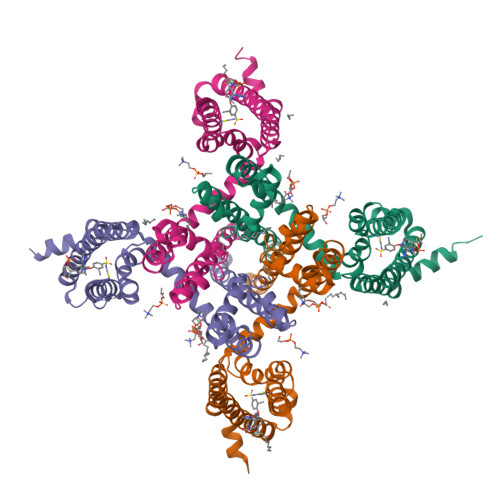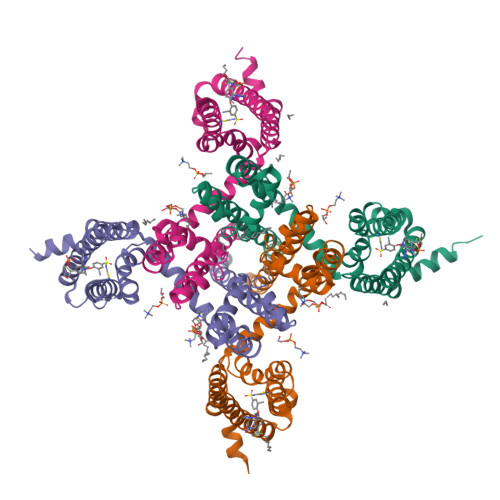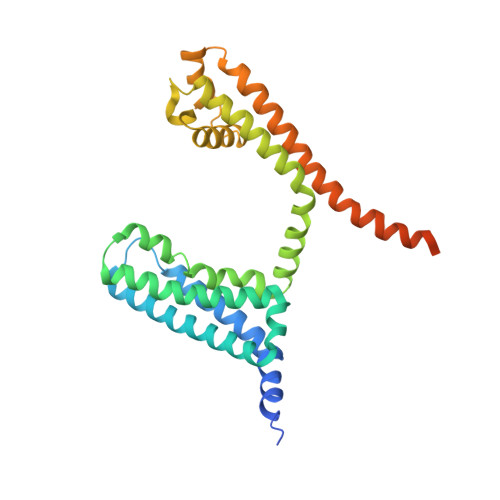Structural basis of Nav1.7 inhibition by an isoform-selective small-molecule antagonist.
Ahuja, S., Mukund, S., Deng, L., Khakh, K., Chang, E., Ho, H., Shriver, S., Young, C., Lin, S., Johnson, J.P., Wu, P., Li, J., Coons, M., Tam, C., Brillantes, B., Sampang, H., Mortara, K., Bowman, K.K., Clark, K.R., Estevez, A., Xie, Z., Verschoof, H., Grimwood, M., Dehnhardt, C., Andrez, J.C., Focken, T., Sutherlin, D.P., Safina, B.S., Starovasnik, M.A., Ortwine, D.F., Franke, Y., Cohen, C.J., Hackos, D.H., Koth, C.M., Payandeh, J.(2015) Science 350: aac5464-aac5464
- PubMed: 26680203
- DOI: https://doi.org/10.1126/science.aac5464
- Primary Citation of Related Structures:
5EK0 - PubMed Abstract:
Voltage-gated sodium (Nav) channels propagate action potentials in excitable cells. Accordingly, Nav channels are therapeutic targets for many cardiovascular and neurological disorders. Selective inhibitors have been challenging to design because the nine mammalian Nav channel isoforms share high sequence identity and remain recalcitrant to high-resolution structural studies. Targeting the human Nav1.7 channel involved in pain perception, we present a protein-engineering strategy that has allowed us to determine crystal structures of a novel receptor site in complex with isoform-selective antagonists. GX-936 and related inhibitors bind to the activated state of voltage-sensor domain IV (VSD4), where their anionic aryl sulfonamide warhead engages the fourth arginine gating charge on the S4 helix. By opposing VSD4 deactivation, these compounds inhibit Nav1.7 through a voltage-sensor trapping mechanism, likely by stabilizing inactivated states of the channel. Residues from the S2 and S3 helices are key determinants of isoform selectivity, and bound phospholipids implicate the membrane as a modulator of channel function and pharmacology. Our results help to elucidate the molecular basis of voltage sensing and establish structural blueprints to design selective Nav channel antagonists.
Organizational Affiliation:
Department of Structural Biology, Genentech Inc., South San Francisco, CA 94080, USA.




















